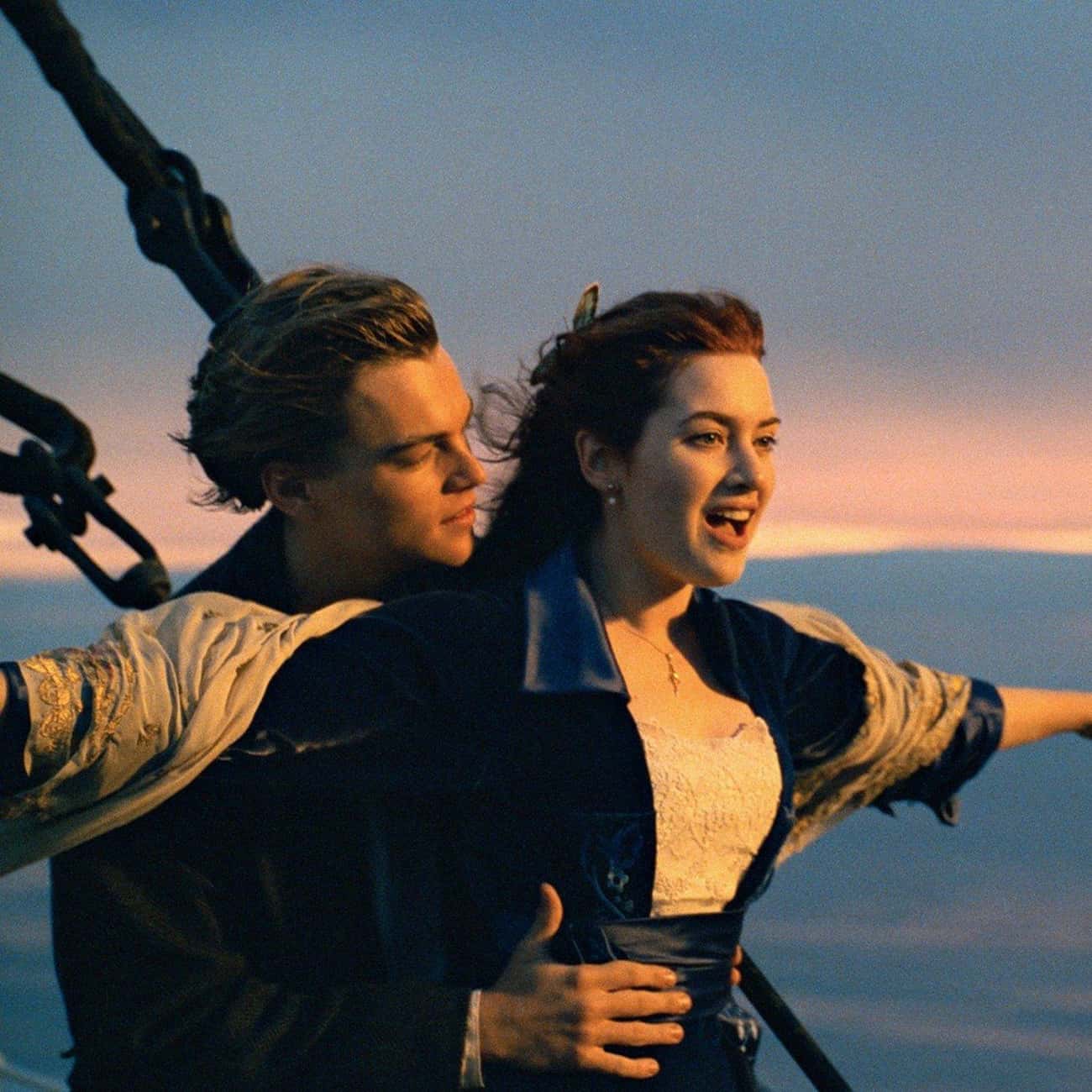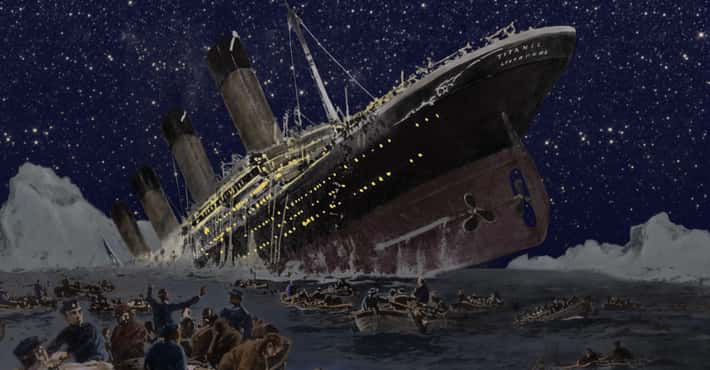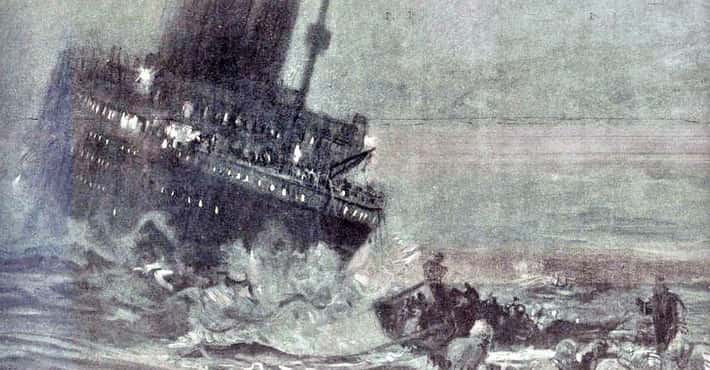
- Photo:
- A Night to Remember
- The Rank Organisation
The Best Movies About The 'Titanic,' Ranked By History Buffs
Copy link
Vote up the films that offer an appropriate tribute to the famously doomed ship.
Name a movie about the sinking of the Titanic, and one probably jumps to mind: the 1997 blockbuster by James Cameron. But other Titanic-focused films were released before Rose and Jack's love story - and before modern visual effects were developed that helped make Cameron's Titanic such a blockbuster.
The 1958 classic A Night to Remember is still touted as one of the most historically accurate depictions of the disaster, even though it was released long before scientific discoveries were made about the shipwreck. Still, some Titanic-themed films chose to stray from the typical “disaster movie” experience, focusing on romance and avoiding the tragedy of the sinking. A musical was even made, celebrating the "unsinkable" Molly Brown.
- 1100 VOTES
How It Tells The Tragedy: The film takes place on the night of the disaster. While we meet some of the guests, including a few couples in first class and a few steerage passengers, much of the time we stay with the crew of the Titanic. With them, we see how the various warnings about the dangerous ice were ignored or not received, as well as the realization that the ship doesn't have enough lifeboats for those on board.
Place In History: Because A Night to Remember was filmed 46 years after the sinking of the Titanic, some survivors (both passengers and crew) were still alive. The filmmakers used this to their advantage, even hiring the ship's Fourth Officer to be their technical adviser.
The movie was remarkably accurate for the time, with each page of the script including the exact angle the ship's deck should be for that moment of the sinking process. The story and historical accuracy even inspired James Cameron to pay homage to one of its most famous scenes, featuring shipmaker Thomas Andrews.
- 250 VOTES
Saved from the Titanic (1912)
- Photo:
- Eclair Film Co.
How It Tells The Tragedy: The 10-minute silent film follows Miss Dorothy (played by Dorothy Gibson) as she describes the harrowing experience of surviving the sinking of the Titanic to her parents and fiancé.
Place In History: Saved from the Titanic was released in 1912 just 31 days after the sinking of the Titanic. The star and co-writer of the film, Dorothy Gibson, actually did survive the shipwreck. She was loaded onto the first lifeboat launched safely into the water. To add to the film's authenticity, Gibson wore the same clothes she had been wearing the night of April 14. Throughout the weeklong filming of the movie, Gibson reportedly had several emotional breakdowns. Tragically, the short film is believed to be lost, destroyed in a studio fire in 1914.
Actors: Dorothy Gibson, Alec B. Francis, Julia Stuart, John G. Adolfi
Released: 1912
Directed by: Étienne Arnaud - Photo:
- 362 VOTES
How It Tells The Tragedy: This made-for-TV film follows passengers of each class on the Titanic voyage. Most of the featured passengers were real people aboard the Titanic, including John Jacob Astor IV and Molly Brown (played by Cloris Leachman).
Place In History: The TV movie featured a young Helen Mirren as real-life stewardess Mary Sloan, who survived the disaster. One reviewer described the film as one of the best portrayals of the Titanic disaster because of the way it highlighted the often overlooked people aboard the ship:
While its fictionalized approach doesn't generate the power of Remember's [referring to A Night to Remember] definitive documentary-style re-creation, this little-heralded TV movie is still surprisingly effective, in part because it pays more attention than Remember to the fate of the poorer passengers.
- 459 VOTES
How It Tells The Tragedy: The focus of the story is an estranged wealthy couple who live in England. The wife, Julia, has run away with her two children to move back to America. Her husband, Richard, boards the Titanic at the last minute to try to stop them. On the ship, the couple's daughter, Annette, quickly falls for a brash college student, Giff (played by a young Robert Wagner). Then, their world comes crashing down after the ship strikes the iceberg.
Place In History: Titanic was one of the first big-screen film adaptations of the sinking of the Titanic. Although the highlighted passengers and their story were fictionalized, the filmmakers tried to make the depiction of the sinking as accurate as they could. For example, all the dialogue about the navigational details of the ship were taken verbatim from published reports of official inquiries held in 1912. To help moviegoers feel like they are on the ship, the filmmakers didn't use any background music; the only music the audience hears is the songs played by the ship's band. Survivors of the shipwreck were invited to attend a preview of a film.
- 565 VOTES
How It Tells The Tragedy: This two-part CBS miniseries follows the stories of three separate families who are aboard the Titanic: the married Isabella (Catherine Zeta-Jones) in first class, who runs into her former lover, Wynn (Peter Gallagher); the Allison family, also in first class, who travel with their new (and increasingly suspicious) nurse and two small children; and Jamie, down in third class, who stole a ticket and quickly falls for a young missionary, Aase. We see how they survive (or perish) amid the chaos of the sinking.
Place In History: While the film had an impressive cast, including George C. Scott (who played Captain Edward J. Smith) and Tim Curry (who played a cruel crewman), the miniseries was mostly panned by critics who claimed the acting was subpar and the plot was unoriginal, with a New York Times reviewer writing that it “follows the trite conventions of the disaster genre with a total lack of imagination.” The same critic said there seemed to be an “epidemic” of Titanic-themed productions ahead of the anticipated film by James Cameron (which was released the following year).
This series was one of the first times the sinking of the Titanic was accurately shown splitting into two pieces. Since the wreck, historians and engineers were convinced the ship went down in one piece - despite survivors claiming they saw the ship split in half. The truth wasn't revealed until 1985, when Robert Ballard and his crew finally discovered the wreckage, finding it in two pieces on the ocean floor.
- 698 VOTES
How It Tells The Tragedy: In the 3 hour and 14 minute film, the plot takes place in two different time periods. One is in the present, as a diving vessel tries to find the (fictional) Heart of the Ocean necklace among the Titanic wreckage. The majority of the film is shown in a flashback as we watch two young people (also fictional) aboard the ship, Rose and Jack (Kate Winslet and Leonardo DiCaprio), fall in love. We then experience the crash into the iceberg, and proceeding pandemonium, mostly through their perspectives.
Place In History: When Titanic was released, it became the highest-grossing film of all time, making over $1 billion (which had never been accomplished by a film up to this point). The film also cost an astonishing $200 million to make. To this day, it's one of three movies that share the title for most Academy Award wins by a film, with 11. The other two are Ben Hur (1959) and The Lord of the Rings: The Return of the King (2003). Director James Cameron was relentless in making sure the details of the night of the shipwreck were as accurate as possible. When astrophysicist Neil deGrasse Tyson pointed out that the stars in the movie were not what the actual stars looked like on that cold April 1912 night, Cameron even digitally changed the sky for later releases of the film.
Beloved by audiences and praised by critics for the amazing special effects and historical accuracy of the shipwreck, Titanic has gone down (no pun intended) as one of the greatest films of the 20th century.
- 768 VOTES
How It Tells The Tragedy: In this musical, Debbie Reynolds portrays one of the most famous passengers aboard the Titanic, Molly Brown, throughout her life. Coming from nothing, Molly is determined to marry rich, which she does when she meets miner Johnny Brown. Later in their life, after having just returned from an extravagant trip to Europe, Molly decides she wants to go back without her husband. Once in France, she realizes what a selfish wife she's been. She's determined to make up with her husband, so she boards the new Titanic ship. After hitting the iceberg, Molly helps save many fellow passengers.
Place In History: The Unsinkable Molly Brown is often celebrated as one of Debbie Reynolds's greatest roles, earning her an Oscar nomination for best actress. Although many Titanic films are serious and heartbreaking, this film focuses more on the joyful elements of Molly's life and what a ray of light she was. In real life, after the sinking of the ship, Molly spearheaded the Survivors' Committee, which supported lower-income survivors who had lost everything.
- 836 VOTES
The Chambermaid on the Titanic (1997)
- Photo:
How It Tells The Tragedy: Rather than depict the tale of the sinking of the ship, The Chambermaid on the Titanic follows a man, Horty, who meets a chambermaid, Marie, aboard the ship. The two share a hotel room the night before the Titanic's departure, but it's unclear to the audience if they actually became intimate. After learning of his wife's potential affair, Horty starts telling everyone about his night of passion with Marie. As he add more details every time he tells the story, he starts gaining the attention of a local playwright, who helps Horty turn the story into a play, complete with a sinking of the ship on stage.
Place In History: The film was a French-Italian-Spanish drama, released originally in French. Timing was not good for the release of the movie, because it came out right after James Cameron's blockbuster, which likely affected how many people saw the film. But reviews were relatively good, including a 1998 New York Times review that said:
Released in the wake of the Titanic phenomenon, the movie also works as a mocking commentary on the hoopla surrounding Cameron's film. A maritime disaster that took place 86 years ago has consumed so much media attention it might just as well have happened last year. Put a star-crossed pair at the epicenter of a tragedy and you have a commercial formula that will never wear out its welcome.
- 934 VOTES
How It Tells The Tragedy: In this made-for-TV romance that starts aboard the Titanic, 20-year-old Edwina is aboard with her parents, two brothers, 6-year-old sister, and fiancé. After the ship strikes the iceberg, Edwina gets her two brothers onto a lifeboat. However, when Edwina's parents lose their youngest daughter, they stay to find her. Although the young child is safe on another lifeboat, Edwina's parents and fiancé perish. Edwina is forced to raise her younger sibling, while dealing with the effects of the trauma, and continuing their parents' legacy.
Place In History: The film, based on a 1991 novel by Danielle Steel, was not well-received, with one reviewer saying:
What you'll remember most about the story is its abrupt ending. You get the feeling that this movie, which sports the look of a big-budget miniseries, was paired down to a two-hour-long presentation.






































